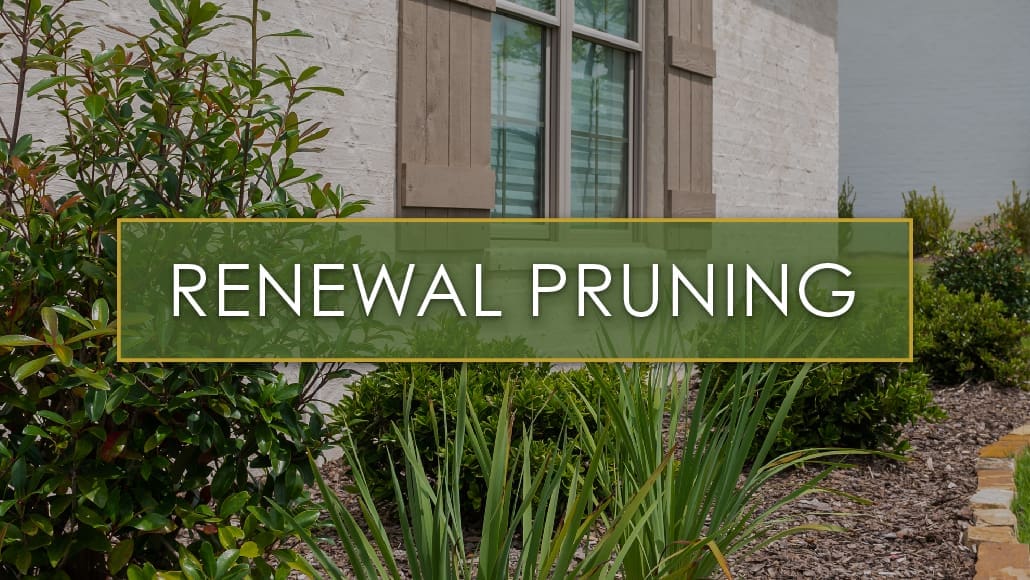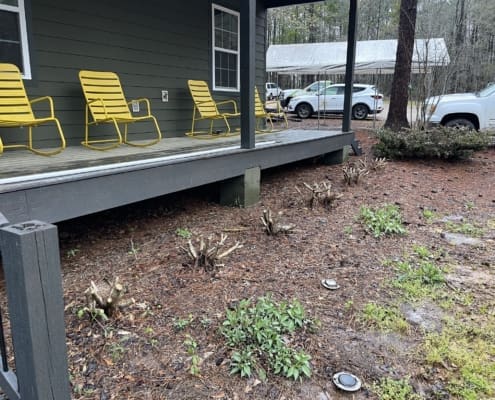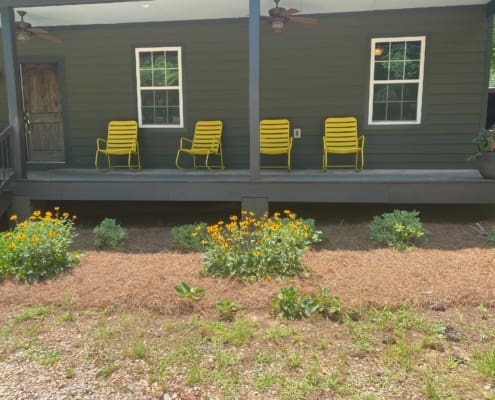
The overgrown pittosporum outside the R&R offices.
We see so many landscapes with healthy, overgrown plants where homeowners choose to remove everything and start over. While we are happy to perform this service for you, we want you to know you have another option!
If your plants are healthy and you like the species, but they’re just too big, you can renewal prune most of them. Renewal pruning is cutting the shrub within 6” – 18” of the ground.
When I’m meeting with clients, this is usually the moment when the husband’s eyes light up! “So, you’re telling me I can just chop these down?!” Well, yes. Get out there and go for it!
We all know getting a plant’s root system established is the most important part of ensuring a long, happy life with your plants. I hope we all know that. It’s all about the roots, people! With mature or overgrown plants you typically have a good, strong root system to work with. When we renewal prune, we are leaving the roots undisturbed and encouraging a new, healthy flush of foliage above the ground.
Here are some things to know before you mow down your whole landscape:
-
Wait until late winter to prune. When you cut your plant back to the ground, you will be left with a little clump of sticks that aren’t very aesthetically pleasing. This is a short-term sacrifice you will need to be willing to make for this process to work. Waiting until late winter, gives you the shortest window of bare sticks. Depending on the weather, you should have fairly full-looking little shrubs again within 3-4 months. I know, I know. Not everyone is willing to wait. That’s ok. Renewal pruning isn’t for you if you don’t want to wait.
-
There are a few plants you should NEVER renewal prune. Boxwoods, Junipers, and Arborvitae WILL NOT COME BACK! Latent buds are concealed within the branches of most plants and when you prune, these buds can develop into shoots. Junipers and Arborvitae DO NOT have latent buds, so if you remove all the green off these plants, you will not get new growth. Boxwoods have latent buds, but tend to be slow growers and can’t be relied on to recover from such severe pruning.
-
Always use clean, sharp tools to prune. Sharp tools make it easier to cut (thank you, Captain Obvious), but it’s also important to note that sharp cuts will heal better. Dull tools can damage plant tissue by tearing or crushing it which increases the risk of infection or disease.
-
Make sure you are renewing healthy plants. If your plants are already diseased or overly stressed, they may not come back from a renewal prune.





